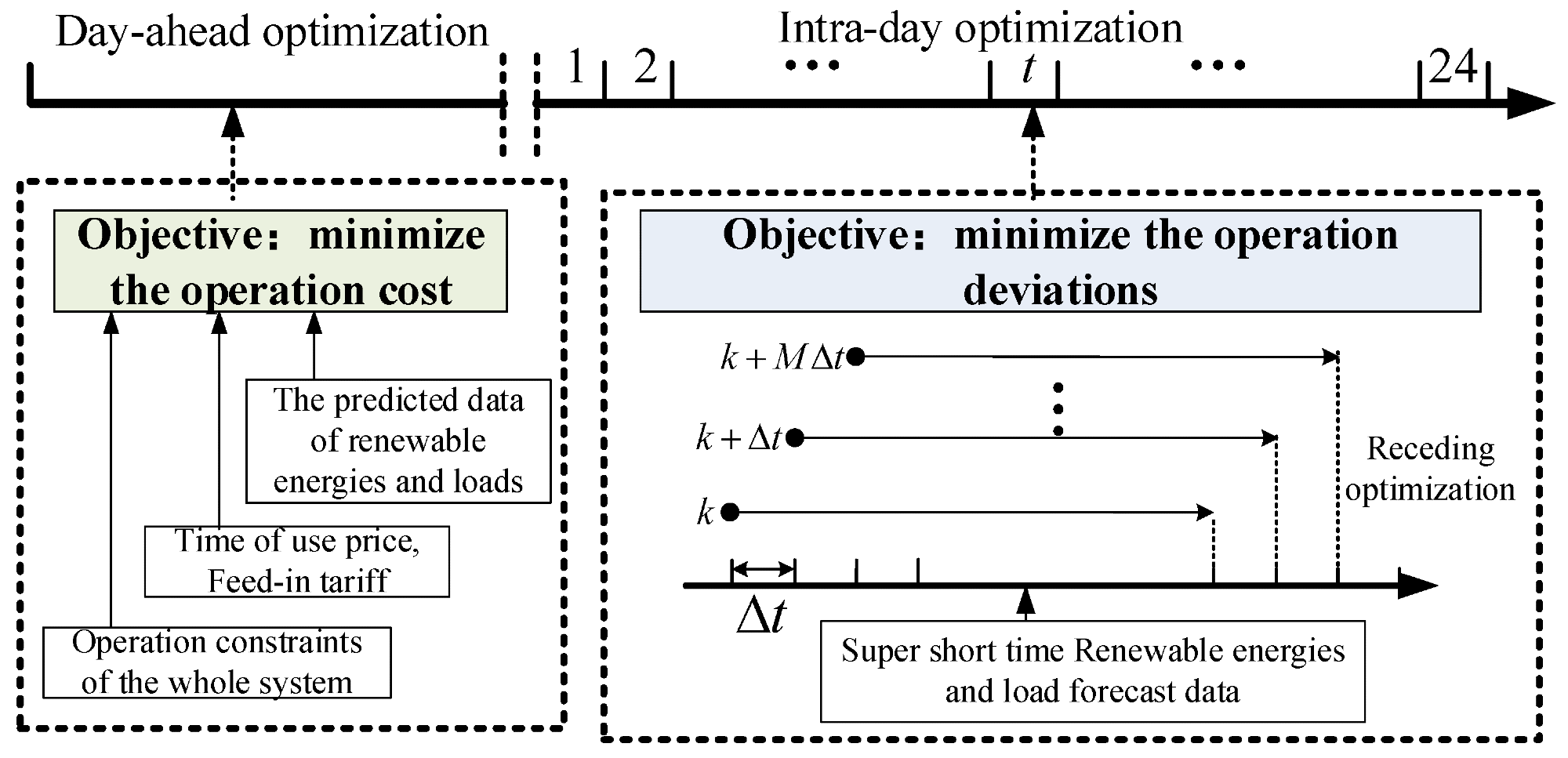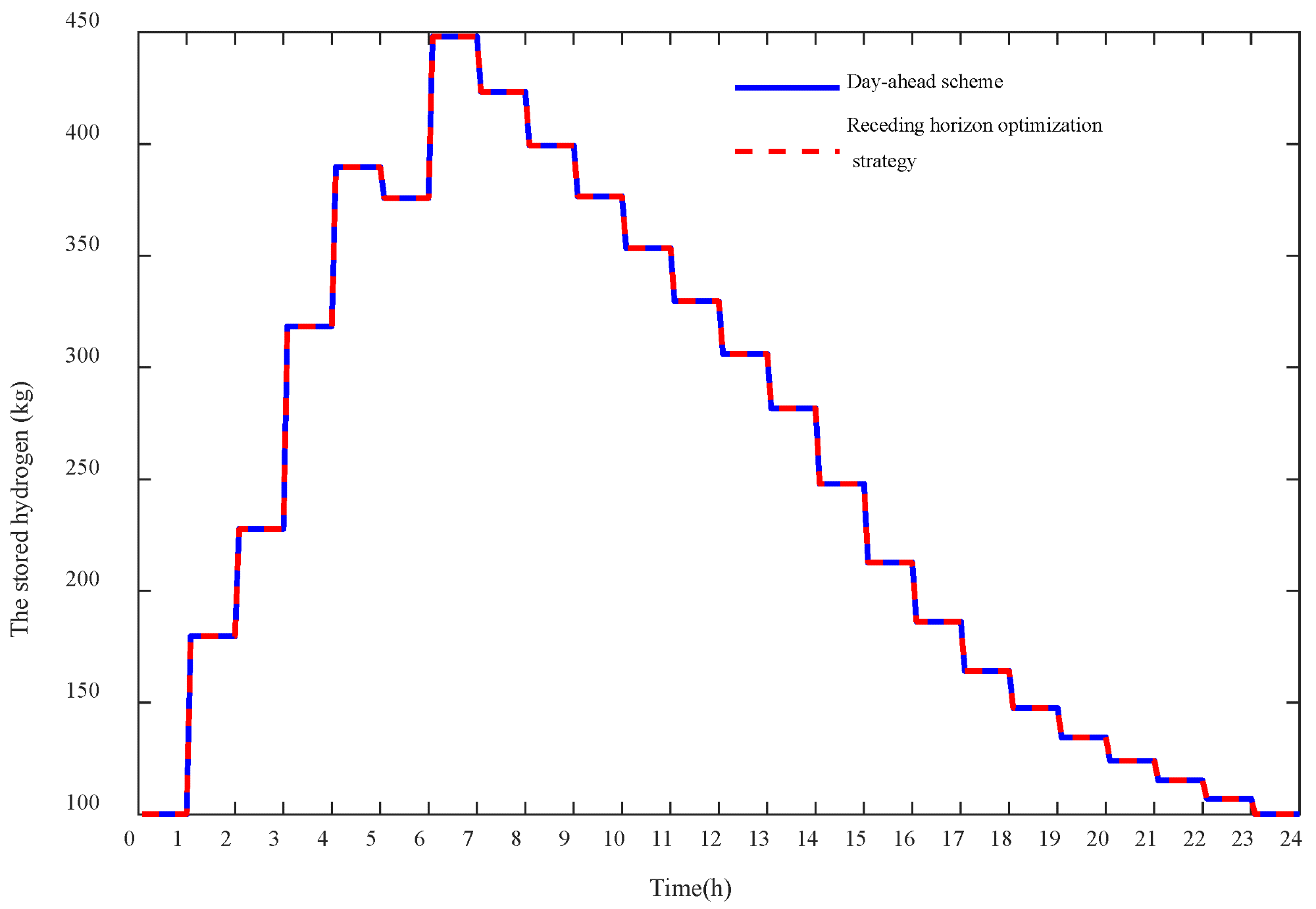 By Surbhi JainReviewed by Susha Cheriyedath, M.Sc.Apr 20 2022
By Surbhi JainReviewed by Susha Cheriyedath, M.Sc.Apr 20 2022In an article recently published in the open-access journal Energies, researchers presented sustainable wind-photovoltaic (PV)-hydrogen-storage (WPHS) microgrid energy management strategies in two stages based on receding horizon optimization.

Study: Two-Stage Energy Management Strategies of Sustainable Wind-PV-Hydrogen-Storage Microgrid Based on Receding Horizon Optimization. Image Credit: petrmalinak/Shutterstock.com
Background
Renewable energies, such as solar and wind, are being used more widely in order to safeguard the environment and deal with the energy crisis. Renewable electricity's randomness and intermittency, on the other hand, remain problematic concerns for large-scale grid integration.
Hydrogen has been viewed as a promising electricity storage and energy carrier medium to enhance the energy system’s sustainability, reduce carbon emissions, promote the use of renewable energies, and reduce their volatility. Modeling, cooperative operation, techno-economic analysis, and other aspects of distributed hydrogen production have gotten greater attention.
Renewable electricity’s stochastic volatility affects not only the sustainable operation of the system of hydrogen production, but also hydrogen purity. The question corresponding to how to mitigate the negative effects of renewable energies' uncertainties and volatility remains a critical challenge. One of the possible ways is an energy management strategy based on receding horizon optimization or a model predictive controller.

The schematic of wind-PV-hydrogen-storage microgrid. Image Credit: Wang, J et al., Energies
About the Study
In this study, the authors proposed a two-stage energy management model based on receding horizon optimization for a sustainable WPHS microgrid to eliminate the negative effects of their uncertainties and fluctuations. The day-ahead optimization was performed in the first stage based on the projected outpower of wind turbines (WT) and PV, as well as the predicted power and hydrogen load demands.
The intra-day optimization was performed in the second stage, based on actual data, to trace the day-ahead operation schemes.
The team discussed a two-stage energy management model for the sustainable WPHS microgrid based on receding horizon optimization to alleviate the fluctuations and uncertainties of outpower of WT and PV, as well as the power and hydrogen demand, and the significance of energy storage was also explored. To deal with the randomness and uncertainties of renewable loads and energies, as well as to reduce the operation cost, a two-stage energy management model based on receding horizon optimization was presented.
The day-ahead optimization model was used to trace the day-ahead schemes and minimize the deviations of the intra-day and day-ahead operation strategies, and the intra-day optimization model was used to reduce the alterations of the intra-day and day-ahead operation strategies.
The researchers investigated and demonstrated the effect of battery storage in lowering operating costs and enhancing the energy management model's performance. The subsystem models and the structures of the sustainable WPHS microgrid were introduced. The two-stage energy management model was proposed.

The schematic of the two-stage energy management model. Image Credit: Wang, J et al., Energies
Observations
The microgrid's running expenses were estimated to be 27,727 CNY and 31,815 CNY, respectively, with and without battery storage. The cost of operating could be reduced by 12.85%. Furthermore, for the microgrid with and without battery storage, the maximum deviation of the receding horizon optimization approach and the day-ahead scheme were 202.0123 kW and 231.5762 kW, respectively. When battery storage was taken into account, this divergence was reduced by 12.77%. The maximum variations of exchanged power, compressor power, electrolyzer power, and battery storage power are, respectively, 199.45 kW, 3.48 kW, 81.34 kW, and 191.62 kW.
The standard deviation for day-ahead forecast errors for wind power, power, PV, and hydrogen demands was at 25%, 15%, 20%, and 15%, respectively, of their day-ahead forecast data.
The suggested two-stage management model was successful in reducing unpredictable elements and ensuring the stability of the entire system. Simulations showed that the suggested two-stage energy management approach was reliable and effective at coordinating the operation of the WPHS microgrid and removing WT, PV, and load uncertainty. Furthermore, battery storage could lower operating costs, eliminate volatility in traded power with the power grid, and improve the energy management model's performance.
The intra-day optimization model could improve the WPHS microgrid's operation stability and remove the negative impact of fluctuations in WT, power, PV, and hydrogen needs. Intra-day receding horizon optimization algorithms could successfully trace the day-ahead schemes, and the suggested two-stage energy management model was effective, robust, and coordinated the sustainable WHP microgrid operation.
Furthermore, battery storage could significantly reduce operation costs by 12.85%, as well as minimize fluctuations in the exchanged power having the power grid, and the deviation of exchanged power between the intra-day and day-ahead strategies was reduced by 12.77% when battery storage was considered.

The storage state of hydrogen tank of WPH microgrid. Image Credit: Wang, J et al., Energies
Conclusions
In conclusion, this study elucidated a two-stage energy management approach for a sustainable WPHS microgrid. The proposed two-stage optimization was effective in managing the micro's operation and removing WT, PV, and load uncertainties and variations. The day-ahead optimization could efficiently coordinate the operations of the WT, PV, battery storage, and power-to-hydrogen subsystems, which allowed for high-efficiency operations to be realized.
The authors mentioned that more precise models of each component, such as the green hydrogen system's startup cost and ramp time, will be examined in future studies. They also suggested another intriguing topic that can be incorporated into the two-stage energy management paradigm - demand-side management.
Disclaimer: The views expressed here are those of the author expressed in their private capacity and do not necessarily represent the views of AZoM.com Limited T/A AZoNetwork the owner and operator of this website. This disclaimer forms part of the Terms and conditions of use of this website.
Source:
Wang, J., Li, D., Lv, X., et al. Two-Stage Energy Management Strategies of Sustainable Wind-PV-Hydrogen-Storage Microgrid Based on Receding Horizon Optimization. Energies 15(8) 2861 (2022). https://www.mdpi.com/1996-1073/15/8/2861